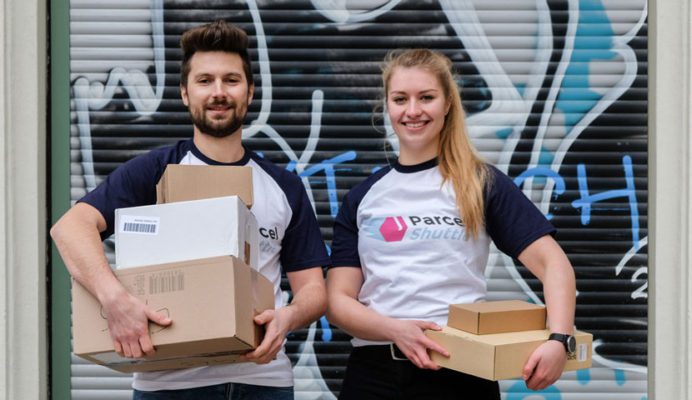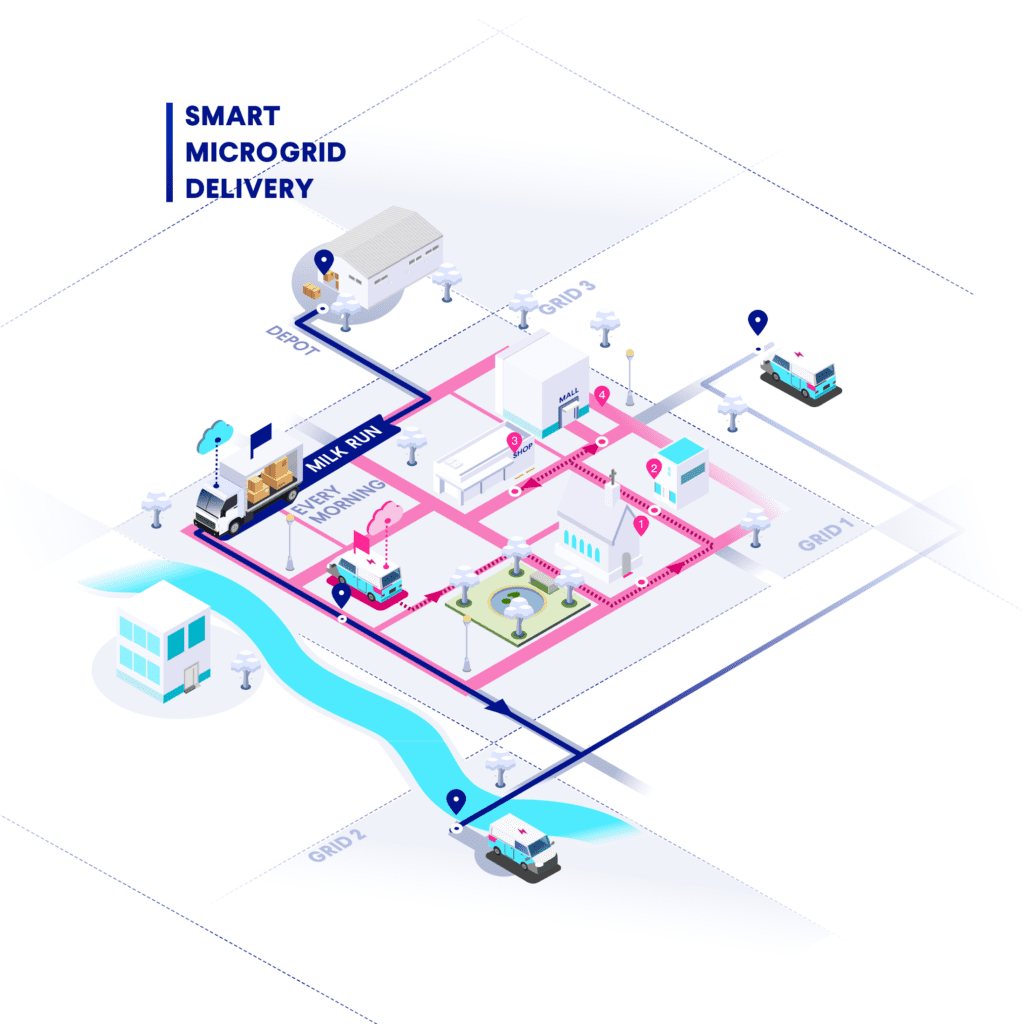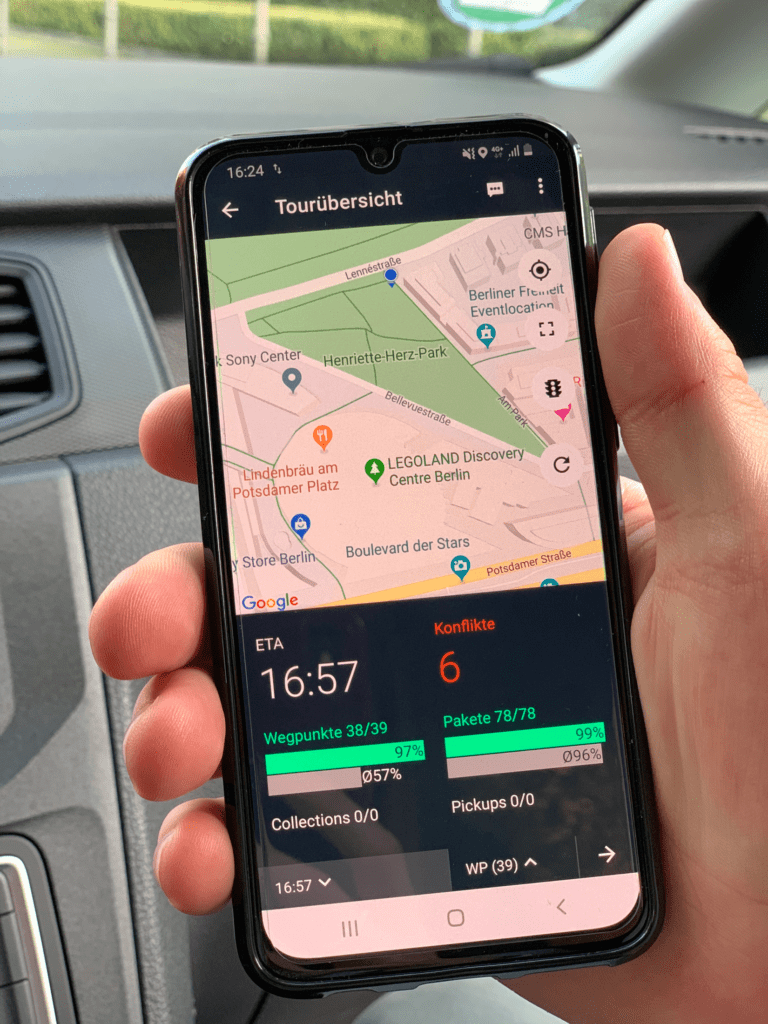Beyond MicroGrids: Bringing Delivery to Berlin

Parcel Shuttle: Bringing green delivery to Berlin and beyond with intelligent microgrids
Parcel Shuttle radically lowers delivery travel distance, slashes distribution times by 25%, and reduces its carbon footprint with the Google Maps Platform.
In Berlin’s urban bustle, delivery vans are as ever-present as the city’s famed street art and beer gardens. Germany is Europe’s biggest parcel delivery market, and its capital leads the way.
While deliveries make busy city life more convenient, there’s a growing concern about their impact on the environment and urban congestion, as growth in delivery vans clogs traffic and pollutes the air. The World Economic Forum says urban deliveries will add 11 minutes to daily commutes and increase CO2 emissions by 30% until 2030 without intervention.
“We want to make a difference and help the world cope with soaring delivery demand while keeping our cities lovely and livable. That’s our mission. Google Maps Platform, with its world-class route sequencing and geocoding solutions, is enabling us to make environmentally-friendly delivery a reality.”
Simon Seeger , Founder, Parcel Shuttle
Tech innovator Simon Seeger envisioned keeping his hometown clean and livable amid soaring parcel demand. It drove him to launch Parcel Shuttle, a platform designed to bring Berlin more environmentally friendly deliveries while offering drivers fairness and work flexibility, backed by Parcel Service GLS. Parcel Shuttle rethinks the traditional delivery model by dividing Berlin into “smart micro-grids” that drastically reduce the number of last-mile kilometers per parcel.
To realize his vision, Simon needed the most robust mapping solution to guide inexperienced freelance drivers to obscure addresses in Berlin’s urban sprawl. He turned to the Google Maps Platform and found powerful and creative mapping tools that delivered results beyond his expectations.
“We want to make a difference and help the world cope with soaring delivery demand while keeping our cities lovely and livable. That’s our mission.
Google Maps Platform, with its world-class route sequencing and geocoding solutions, is enabling us to make environmentally-friendly delivery a reality.”
Simon Seeger , Founder, Parcel Shuttle

Editing addresses, pinpointing locations with Google Maps Platform
In the traditional parcel delivery model, hundreds of vans fan out from warehouses outside the city to distribute parcels in town before returning to the depot. Mileage and workforce hours pile up just making the back-and-forth depot journey, not to mention crisscrossing town for drop-offs. Seeger decided to turn the process on its head.
His team developed a system in which one large truck leaves the warehouse on a “milk run” to drop off parcels to delivery cars parked within each Berlin microgrid, within pedestrian distance from drivers’ homes. The assigned driver grabs parcels from an already loaded car and delivers the goods in an optimal loop around the neighborhood, reducing the burden on drivers, roads, and air quality.
To bring the solution together, Parcel Shuttle faced two significant challenges.
- It needed to guide drivers (often with no prior delivery experience) to the car’s location, then along the most efficient delivery route, with crystal clear instructions for hitting each stop.
- Address quality in parcel delivery is notoriously inaccurate. Misspelled street names, incorrect house numbers, and wrong zip codes are all part of the daily challenges: “You just have to live with what you get,” Simon explains. “And that’s usually a mess.”
Even for professional delivery people, incorrect addresses are a challenge. For novice drivers, they’re an insurmountable hurdle without help. That’s where the Google Maps Platform comes in.
Imagine delivering a parcel with invalid inputs: company name, street number, postal code, and more. In a town like Berlin, it’s like trying to find a needle in a haystack.
“When you work with the Geocoding API, you can get an invalid address come in, and amazingly the best results come out. It doesn’t only give a geocode, but also address correction and normalization. That’s crucial because if you’re guiding an inexperienced driver to a spot, it had better be right.”
Simon Seeger , Founder, Parcel Shuttle
For Parcel Shuttle, the Geocoding API came to the rescue, providing more than pin-on-map location coordinates, which aren’t always enough to get you to the right door (even if you’re in the right place.) The true magic for Simon was crunching reams of location data to fix erroneous address inputs, enabling drivers to find the correct delivery point with minimum fuss.
“When you work with the Geocoding API, you can get an invalid address come in, and amazingly the best results come out.
It doesn’t just provide a geocode, it corrects and normalizes the address too. That’s crucial because if you’re guiding an inexperienced driver to a spot, it had better be right, otherwise they can wander around lost for hours.”
Simon Seeger , Founder, Parcel Shuttle
Obtaining the correct address is critical. How do you guide beginner drivers to that address as fast as the pros? For Parcel Shuttle, the answer is the Maps Javascript API. The team quickly learned that calculating distances is only one part of the Maps Javascript API’s route optimization solution.
The Maps Javascript API’s Traffic Layer analyzes live traffic conditions (such as bottlenecks and roadworks) and red lights along roads to deliver the best possible route at any given moment. It uses the same tools to give drivers the most efficient sequencing for multiple stops.
The results? More than 80% reduction in the road covered into the city center, thanks to a combination of Parcel Shuttle’s proprietary algorithms and Google Maps Platform tools. The startup has also achieved 25% savings in last-mile delivery times via Google Maps Platform guided solutions.
Overall, says Simon, Parcel Shuttle is reducing total delivery miles-on-road by roughly 60%, combining its micro-grid model with Google Maps technology, translating into a commensurate carbon footprint reduction.
Moreover, the Google Maps Platform, says Simon, saves the Parcel Shuttle development team precious work hours through robust documentation that allows them to find quick solutions to any issues they encounter.
“If you give a developer access to Google Maps documentation to figure out a problem they’ll be over the moon.
Why? They can just skip the meeting and buckle down to work, losing themselves in the creative flow of inventing the next great feature.”
Simon Seeger , Founder, Parcel Shuttle

Driving unlimited potential with Google Cloud AI and ML
Parcel Shuttle plans to expand to more German cities than worldwide. It sees its growth potential as unlimited due to combining a simple yet unique business model and Google Maps Platform tools to help make the model work.
“If you give a developer access to Google Maps documentation to figure out a problem they’ll be over the moon.
Why? They can just skip the meeting and buckle down to work, losing themselves in the creative flow of inventing the next great feature.”
Simon Seeger , Founder, Parcel Shuttle
This future, says Simon, is likely to be enhanced by Google Cloud machine learning tools such as Google Cloud AI and Google BigQuery. They will enable continuous platform improvement by analyzing millions of data points from a network of independent delivery staff.
“Creating a self-learning environment with Google Cloud AI and ML services will enable us to foster a constantly rising path of efficiency and speed.
That’s where we’re headed.”
Simon Seeger , Founder, Parcel Shuttle
It promises to help Parcel Shuttle pursue its mission of “keeping our cities lovely and livable.” And for Simon’s team, that means more than delivering parcels. One of his drivers recently called the startup’s dispatch office, saying he couldn’t continue his shift because his wife had just gone into labor.
“The team remotely adjusted his Google Maps Platform navigation for his next stop to be his home, then the hospital.
They used route optimization and live traffic prediction to get them as fast as possible to the delivery room.
Enabling life is what we’re in this for, whether it’s bringing essential goods to Berlin homes or helping one of our drivers with a family emergency.
At our office, we still have the baby’s photo pinned up on our wall.”
Simon Seeger , Founder, Parcel Shuttle
The Original article is at Google Cloud Blog